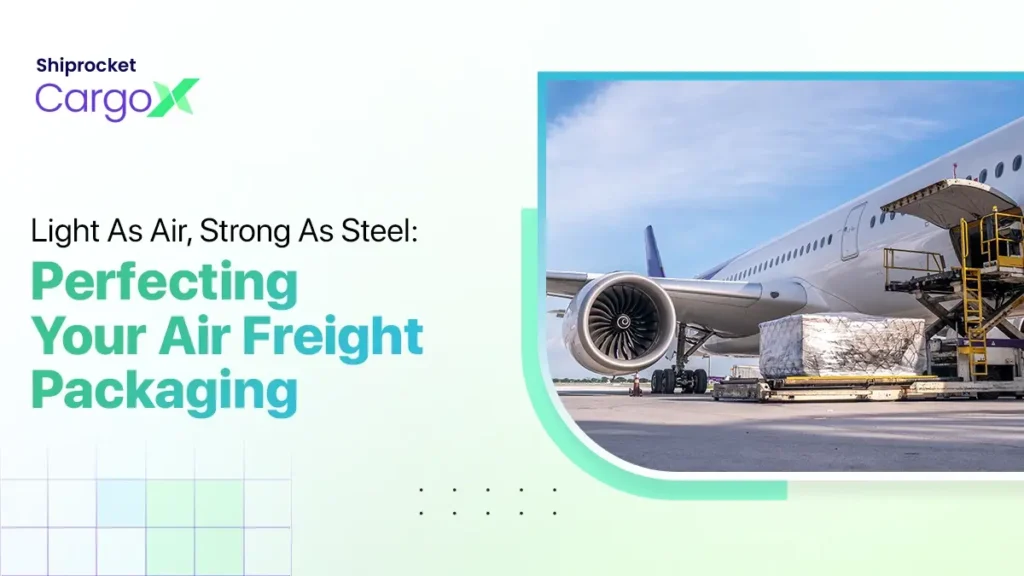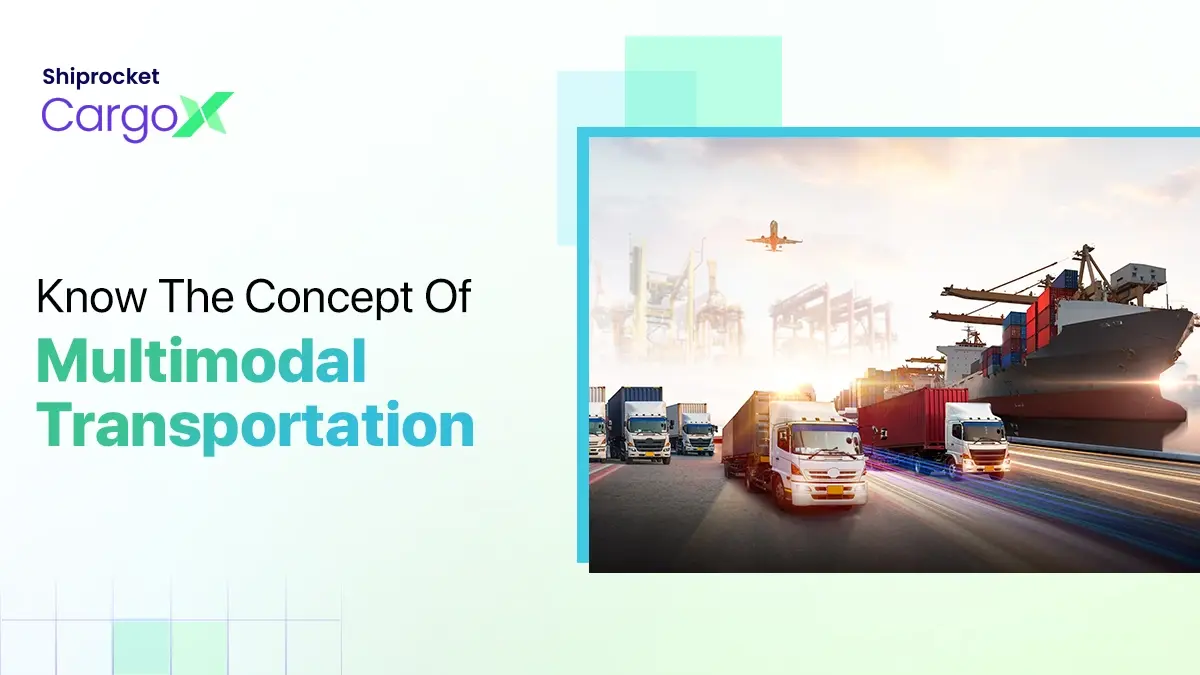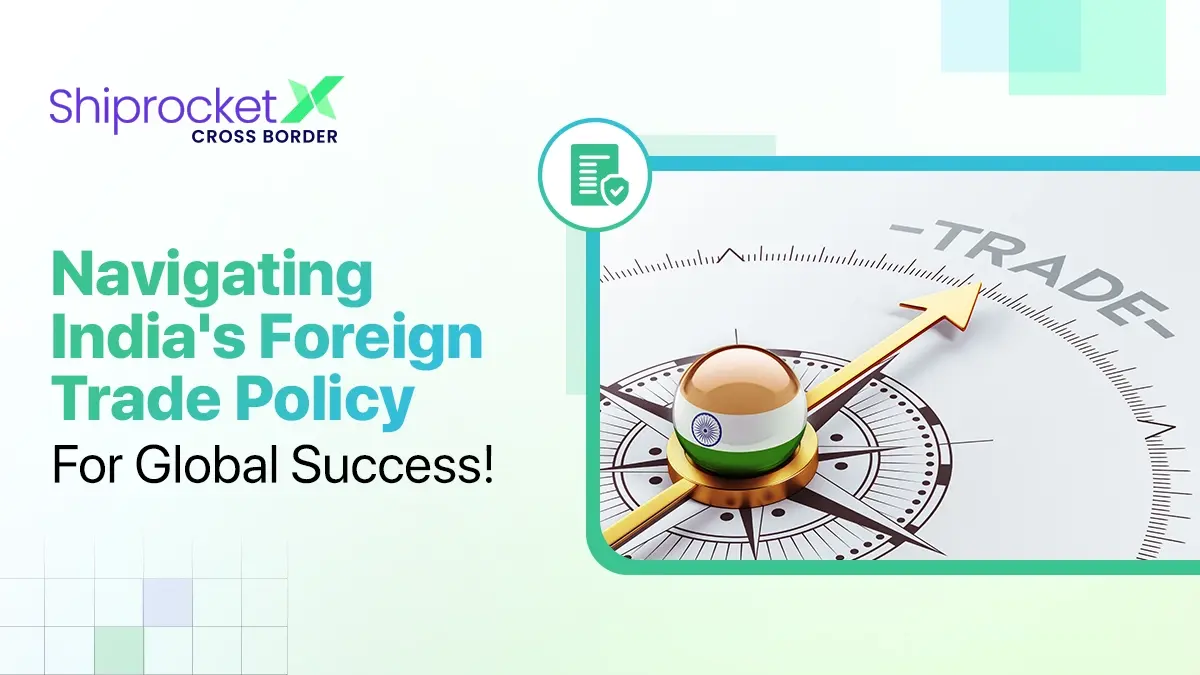Packaging for Air Freight: Optimising Shipment Process
Ever wondered how to minimise your air shipping costs? Does the type of packing influence shipping prices? When you optimise your shipping strategies, you will save substantially on shipping. You will be able to ship more parcels in one container. By optimising your shipping strategies, you will also be able to protect your products from damage.
Air shipment is extremely advantageous over other shipment modes. They are extremely secure, reliable, and speedy. However, your parcels may still be subjected to turbulence and other disturbances, resulting in damage. Thus, your packing strategies must be well planned to ensure that your parcels can withstand these disturbances and reach their destination without any compromise in quality.
This article details several tips for successful air freight packaging, its benefits, and the consequences of improper packing.

Pro Tips for Successful Air Freight Packaging
It takes more than just putting your products into boxes before shipping them via air. There are several additional factors to consider, like the size of the package, security regulations, the material of packing, the method of securing the items inside the package, the distance between your items, labelling, etc. Here are some tips to help you successfully pack your shipments:
- Know cargo dimension restrictions: There are certain limitations concerning the type and size of cargo that can be shipped through airways. There are constraints on the dimensions like height, width, and length of shipments prepared for air freight. The largest parcel that can be sent through air freight is 2.44 x 3.15 meters. You will be allowed to ship parcels that exceed these dimensions only in cases where you strictly adhere to the special equipment packing guidelines . The other limitations will depend on the type of aircraft used for the transportation of goods. Proper cargo packaging following the guidelines can assist in lowering transportation costs by maximising cargo space and lowering cargo weight.
- Adhere to air security regulations: Your goods will be subjected to a thorough examination before being loaded onto the aircraft.
Any one of the methods mentioned below can be used to conduct the pre-shipping inspection:
- Level or price examination: The RACA (regulated air cargo agent) will thoroughly examine every box and item.3
- Consolidated: The goods will be loaded into different unit load devices and then stacked in boxes. Pallet trolleys will be used in such cases.
- Approved known consignor: When you are an approved consignor, extra inspection will not be conducted before loading and transport. All the examinations will be done through an X-ray machine.
You must ensure that your cargo is within the 1.2×1.2×1.53m dimensions. The weight of the shipment should not exceed 1000 kilograms.
- Use sturdy packaging boxes: The entire packing process must be evaluated thoroughly to ensure the security of your cargo. The box you choose to pack your goods must be well-planned in advance. Reused boxes do not provide enough protection and security. Hence, new and branded boxes are to be chosen. The use of double-walled boxes with layers of corrugation will protect the shipments well. It is most suited for fragile cargo.
Considerations to make before packing your cargo.:
- Weight: The weight limits must be researched and followed.
- Moisture: The moisture levels must be examined to ensure that the box will be able to protect your goods from it.
- Pilferage: Boxes with printing and logo are to be used to indicate the contents of the box to stop pilferage of the items within it.
- Create space between items: You must ensure that there is sufficient space between products packed within the same box. The space is needed to avoid damage if the box is subjected to jerks and bumps. Using bubble wrap and corrugated inserts between each of the items is the simplest method to do so.
- Use packing tape: Using packing tape is the best way to secure your boxes. It protects your boxes from being opened during shipping. You must seal your boxes tightly without gaps to avoid the entry of dust, mildew, moisture, etc. Thick, durable, and heavy-duty tape must be used to seal your boxes.
- Label your cargo: Labelling is an important part of proper packaging and should be strictly followed according to freight regulations. Labeling allows the transport crew to know who owns the products being shipped. Ensure that you label the package and its contents. If your cargo contains fragile items, you must mark the package accordingly. Hazardous and dangerous items must also be clearly labelled.
- The commercial invoice: An invoice must be added to the shipment without fail. It helps the customs authorities to easily know the details of the shipper and the contents of the shipment. Delays can be avoided with the addition of the invoice.
Air Freight Pallets: Essential Information for Shippers
A pallet is a trolley-like equipment used to keep goods in a stable position while being transported or lifted. This flat structure supports goods when being handled by forklifts, loaders, jacking devices, etc.
There are different types of pallets based on the material used. These are wooden, plywood, presswood, metal, plastic, and corrugated pallets. When you choose to ship several boxes together, you can use a pallet to minimise the number of trips required to move them together. It also ensures that parts of the consignment stick together, reducing the risk of loss.
Benefits of Following Air Freight Packaging Guidelines
The benefits of air freight packaging guidelines are include the following:
- Protection against damage: The packing is the first layer of security for your shipments. They must be such that they can withstand all the stress the parcel is subjected to during shipping. The packing prevents the products inside from getting damaged or lost.
- Regulation compliance: The right type of packing is crucial for complying with several regulations that govern the transportation of goods. These regulations depend on the country and specifications like height, weight, and width. Non-compliance with these regulations can result in rejection, delays, and fines.
- Cost-effective shipping: The right packing can reduce shipping costs. Proper packing designs and the use of different materials can also manage space and weight.
- Satisfaction of the buyer: When a consignment is delivered to the customer, the packing is the first thing they notice. It creates the initial image of your brand. Thus, your shipments must reach their buyer in good condition to ensure that the buying experience is satisfactory.
- Theft: To prevent theft, proper packing is essential. Bad packing can allow criminals to gain easy access.
Consequences of Improper Air Freight Packing
Packing is the security layer that all parcels need. It is essential to ensure that your goods are not damaged while being shipped. When you fail to adhere to the packing requirements, air carriers can also reject them and decide not to ship them.
Air shipment damages
The handling, movement, environmental factors, turbulence, jerks, etc. that can occur during the air shipping process can cause damage to the cargo. The packing is the sole protective layer of your cargo. Moreover, the risk of harming the products of the other consignor can be a major hassle and expense.
Adhering to packaging regulations is crucial to prevent any damage to your cargo or harm to other shipments and handling staff. This is even more necessary while handling hazardous and dangerous goods. Purchasing cargo insurance is one way of adding another layer of security to your assets.
Rejection of shipment by carrier
The carrier company can refuse to ship your parcel when you fail to meet the packing standards. It can cost you more and also delay your shipping. Moreover, it can disrupt your supply chain processes
CargoX: Streamlining the Timely Delivery of Packages
Shiprocket’s CargoX is extremely experienced in air freight shipping, and their experts are well-versed in understanding the need for efficient packing. CargoX can help you streamline the complexities of international cargo shipping. They offer a combination of operational convenience and expert support. CargoX’s experts can help you optimise your packing strategies while meeting all the necessary regulations for international shipping. They aim to make the global shipping process hassle-free and smoother. CargoX offers pickup services within 24 hours after booking, quick quotations, and digitised workflows. Their transparent operations include easy documentation, crystal-clear invoicing, complete shipment visibility, and no hidden charges.
CargoX will help you protect your goods throughout the shipping journey. With no weight restrictions, CargoX reaches over 100 countries and offers tailor-made shipping plans. A broad courier network ensuring timely dispute resolution, CargoX enables flexible delivery schedules at affordable prices. Moreover, they ensure that your shipments are not subject to any delays or non-compliance when it comes to packing. CargoX also provides B2B delivery.
Conclusion
To conclude, packing plays a vital role in the safety of your goods during air shipping. It is the most important layer of security you can provide to your parcels. Understanding how you can optimise your packing strategies is crucial for you to avoid non-compliance with regulations, rejection by carriers, delays, and penalties during shipping. The use of durable and new packing materials is important as your shipment will be subjected to several types of disturbances like jerks, turbulence, vibrations, moisture, dust, etc. during the shipping journey. These can hinder the quality of the products in the parcel and hence protecting them is necessary.




